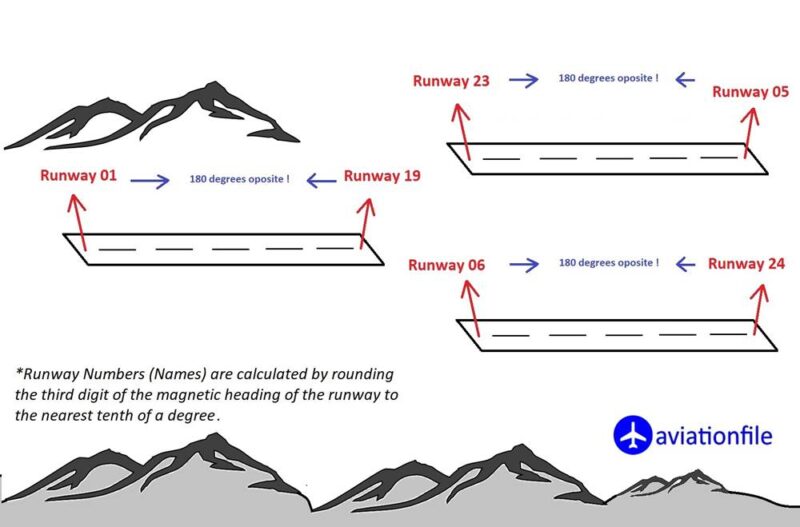Maximizing Efficiency and Safety: The Importance of Preferential Runway in Use
In the fast-paced world of aviation, every second counts. Airlines strive to enhance efficiency, reduce delays, and prioritize safety for their passengers. One crucial factor in achieving these goals is the implementation of a preferential runway in use system. In this article, we will delve into the significance of this system and how it benefits both airlines and passengers.
What is a Preferential Runway in Use?
When it comes to managing multiple runways at an airport, a preferential runway in use refers to the practice of selecting a specific runway as the primary choice for takeoffs and landings. This decision is based on various factors such as wind conditions, weather patterns, and air traffic flow. By designating a preferential runway in use, airports can streamline operations, improve efficiency, and enhance safety.

Benefits of Implementing a Preferential Runway in Use
2.1 Enhanced Efficiency:
Selecting a preferential runway in use enables airports to optimize air traffic flow, leading to reduced delays and increased efficiency. By focusing traffic on a specific runway, airports can minimize the time aircraft spend on the ground waiting for takeoff or landing, thereby maximizing their capacity to handle more flights.
2.2 Improved Safety:
Safety is a paramount concern in the aviation industry. By designating a preferential runway in use, airports can align takeoff and landing procedures with prevailing wind conditions. This alignment significantly reduces the risk of crosswinds, ensuring safer operations. Moreover, a consistent runway selection allows pilots to become familiar with the particular runway’s characteristics, enhancing their situational awareness and minimizing the chances of errors during critical phases of flight.
Factors Considered in Choosing a Preferential Runway
3.1 Wind Conditions:
The primary factor in determining the preferential runway in use is wind direction and intensity. Runways aligned with the wind minimize the impact of crosswinds, enabling safer takeoffs and landings. By analyzing real-time wind data and forecasts, airports can choose the most suitable runway to align with prevailing wind conditions.
3.2 Weather Conditions:
Other weather factors, such as visibility, precipitation, and cloud cover, are also taken into account when selecting a preferential runway. Certain runways may offer better visibility or have fewer obstacles in poor weather conditions, ensuring safer operations during adverse weather situations.
3.3 Air Traffic Flow:
Efficient management of air traffic flow is crucial for minimizing delays and congestion. The preferential runway in use system considers the overall flow of aircraft movements, including departure and arrival routes, to ensure smooth operations. By selecting a runway that optimizes the traffic flow, airports can reduce the likelihood of bottlenecks and enhance operational efficiency.
Collaborative Decision Making (CDM) and Runway Allocation
Collaborative Decision Making (CDM) plays a significant role in the allocation of preferential runways. CDM involves cooperation and information sharing among airlines, air traffic control, and other stakeholders to optimize operations. By actively involving all parties in the decision-making process, airports can ensure that the selected preferential runway aligns with the needs and capabilities of all stakeholders, further enhancing efficiency and safety.
Conclusion
The implementation of a preferential runway in use system is a crucial step toward maximizing efficiency and safety in aviation. By carefully considering factors such as wind conditions, weather patterns, and air traffic flow, airports can streamline operations, reduce delays, and enhance overall safety. As technology advances, airports can leverage real-time data and collaborative decision-making processes to optimize runway allocation, further benefiting airlines and passengers alike. With a well-implemented preferential runway in use system, airports can ensure smoother operations, minimize delays, and provide a safer and more efficient travel experience for all.
References:
Federal Aviation Administration (FAA): “Preferential Runway Use Program” – https://www.faa.gov/airports/engineering/airport_tech/airport-safety-and-operations/airport-operations/preferential_runway_use/
International Civil Aviation Organization (ICAO): “Airport Collaborative Decision Making (A-CDM)” – https://www.icao.int/safety/acp/ACPWGF/ACP-WGF16WP001a-en.pdf
Eurocontrol: “Runway Operations Toolkit” – https://www.eurocontrol.int/sites/default/files/content/documents/nm/runway-operations-toolkit.pdf
Air Traffic Control Association (ATCA): “Collaborative Decision Making in Air Traffic Management” – https://www.atca.org/wp-content/uploads/2019/10/CDM-for-Publication-2003.pdf
International Air Transport Association (IATA): “Air Traffic Management Glossary” – https://www.iata.org/contentassets/0f65b758b6f146ec984b78fd71f662e7/iata-air-traffic-management-glossary.pdf



